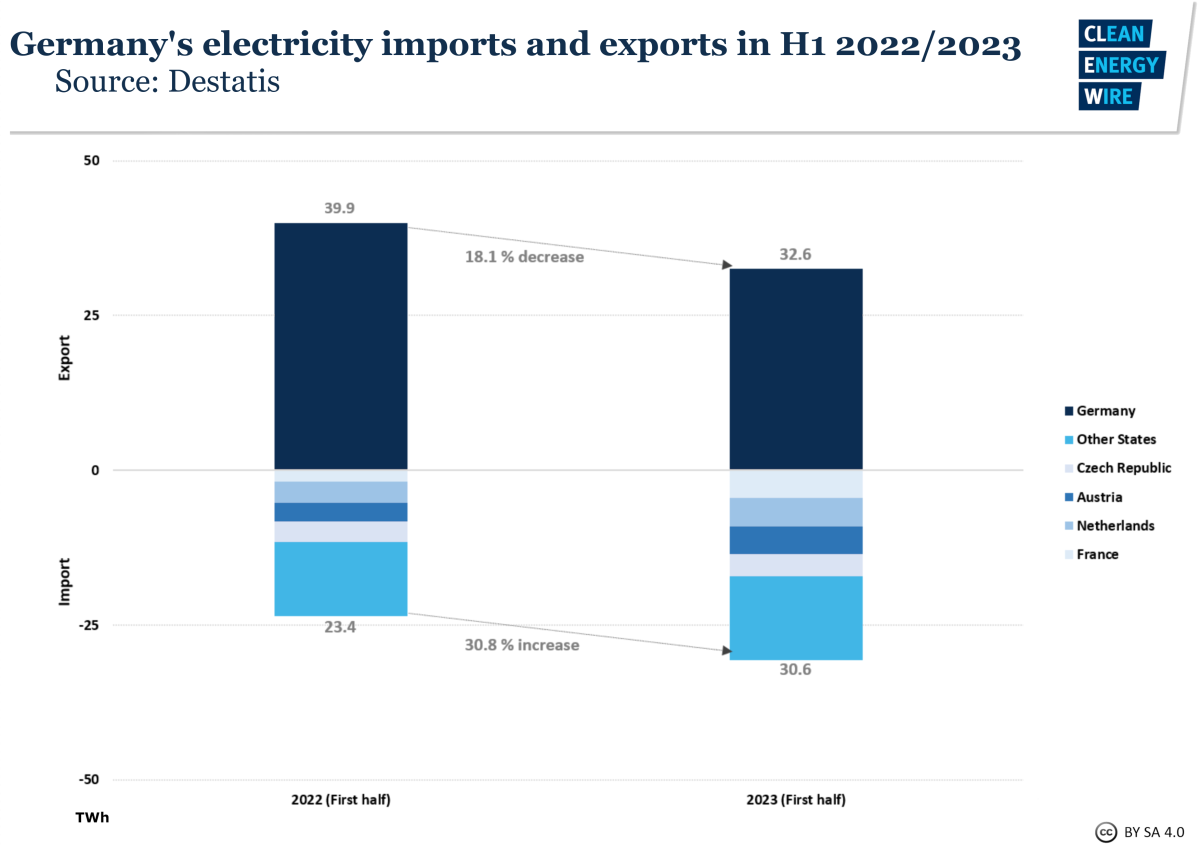Germany's electricity export surplus decreases significantly in first half of 2023
Clean Energy Wire / dpa
Germany's net exports of electricity in the first half of this year were significantly lower than in the same period in 2022. The export surplus fell from 16.5 billion kilowatt hours (kWh) in the first six months of 2022 to 2.0 billion kWh in the same timeframe in 2023, according to preliminary data by the Federal Statistical Office (Destatis). "If we consider only the 2nd quarter of 2023, in which the nuclear power plants generated only 1.0 billion kilowatt hours of electricity until they were shut down on 15 April 2023, significantly more electricity was imported (18.5 billion kilowatt hours) than exported (11.4 billion kilowatt hours)," Destatis wrote. According to the statistical office, the import surplus of just over seven billion kWh roughly corresponds to the amount that the German nuclear power plants fed into the grid in the second quarter of 2022, at 7.3 billion kWh.
Energy industry association BDEW told news agency dpa that Germany's import balance was a sign of a functioning internal EU electricity market as it had been cheaper to generate electricity abroad in recent months, and thus replace inland fossil power generation. Between 2003 and 2022 Germany was an annual net electricity exporter, although during that period there were individual months in summer in which Germany was a net importer of electricity. "Higher electricity imports in the summer months do not mean dependence on other European countries for electricity supply, nor are they an indication of shortages in Germany," BDEW head Kerstin Andreae said. The EU has been working for decades to integrate its internal electricity market and increase electricity flows across borders, as this can lower costs and strengthen supply security.
Renewable energy sources supplied the majority (53%) of Germany’s public net electricity consumption in the first half of 2023 (first half of 2022: 48.4%), according to Destatis. Electricity generation from coal fell by nearly a quarter compared to the first half of 2022, while wind power overtook coal to gain the highest share in electricity generation (29% and 27% respectively). Destatis counted net public electricity supply, and did not include the electricity power plants produce and use directly for their operation. The numbers therefore don't correspond to total electricity consumption.


